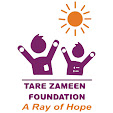The problem of Hunger In India
What you ate today in your breakfast? What are you planning to have in your Lunch? These are the frequent questions you ask everyone. Everyone? No. There are still many families across the globe who can afford one time meal a day or sometimes even not that. We are familiar with our society's class system – The upper class, the middle class, and the lower class. Besides, we look upon the working class and the underclass. These underclass people rarely have a permanent source for gaining money.
When we talk about undernourishment, India becomes home to the largest undernourished population in the world which includes 189.2 million people of our nation, i.e., 14% of our population is undernourished, 20% of children under 5 are underweight, 34.7% of children under five years of age are stunted and 51.4% women in the reproductive age (15-49 years) are anemic, according to the source.
When it comes to food production in India, food grain production has increased almost two times. But, while India produces sufficient food to feed its population, it cannot provide access to food to a large number of people, especially women and children. They suffer from hunger and starvation. Several factors become the reasons behind such a miserable condition of the population.
Poverty has branched out its span so effectively in our country that it is far from being eradicated. It has been estimated that 23.6% of the Indian population, or about 276 million people, lived below $1.25 per day purchasing power parity. Here, poverty becomes the well-known reason behind starvation. Poverty alone does not lead to malnutrition, but we must consider that it seriously affects the availability of adequate nutritious food for the most vulnerable and endangered populations.
Another reason that comes forward is less access to food materials. Most of the food and nutrition crisis is not because of less availability or less food; it is due to the less access to it because these people are so low that they can't even afford and obtain fair and enough food.
The non-availability of food in markets and stores, demanding access to these markets due to lack of a good transportation network, and insufficient financial resources are all the factors that are contributing to the food insecurity of these populations. So, now people are increasingly dependents upon international markets for all or part of their food supply, especially during the harvest periods.
The life-supporting lifeline, i.e., Water, has great importance here. Due to less availability of good and potable drinking water, several health problems occur. Due to the lack of potable Water, substandard sanitation, and dangerous and harmful hygiene practices it increases many chances to get in touch with infectious and water-borne diseases, which directly causes acute malnutrition.
Moreover, certain illnesses and infections, such as TB (tuberculosis), measles, and diarrhea, are directly linked to acute malnutrition. When these diseases and malnutrition combine, it weakens the metabolism, creating a harmful and vicious cycle of infection and undernourishment that leads to illness vulnerability. Most heard, HIV and AIDS have become a leading cause of acute malnutrition in developing countries.
A child who is infected with HIV is more vulnerable to have acute malnutrition than a healthy child. Anti-retroviral drugs become more effective when combined with adequate and regular food intake. So, ensuring a healthy diet is, at this moment, an essential aspect of HIV control and treatment.
The situation has improved. While there is still substantial room for improvement, the data show that the progress of the program of eradicating starvation from these populations is underway. The country's ranking now on the Global Hunger Index has decreased in the last two decades, and we could improve more by giving them opportunities to private organizations. All these facts about hunger in India highlight the necessity of policies and programs to be improved to improve many of the country's citizens' living conditions.








1 Comments
If we can conquer space, we can conquer childhood Hunger.
ReplyDeleteFree Treatment in Punjab